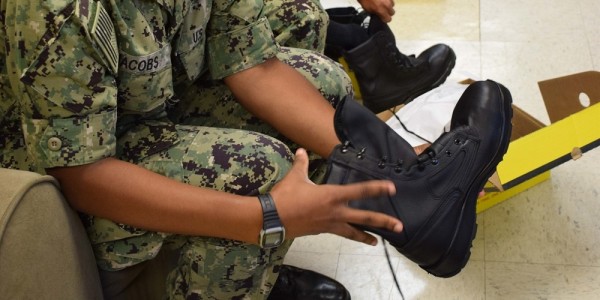

Navy senior leaders could decide whether or not to approve the new I-Boot 5 early in 2020, said Rob Carroll, director of the uniform matters office at the Chief of Naval Personnel’s office.
“The I-Boot 5 is currently wrapping up its actual wear test, its evaluation,” Carroll told Task & Purpose on Monday. “We’re hoping that within the first quarter of calendar year 2020 that we’ll be able to present leadership with the information that they need to make an informed decision.”
If the Navy approves the new boot, it could take anywhere from one to two years to make it available to all sailors, depending on factors associated with contracting, he said.
Most of the sailors who have wear tested the boot have said they are very happy with it, Carroll said. The I-Boot 5 has a redesigned midsole and outsole to make it more comfortable and lighter than the current I-Boot 4.
“Another main factor associated with the I-Boot 5 is it can be worn in multiple environments,” Carroll said. “Today, if a sailor works in the flight deck area, they have to have certain boots that will not pick up FOD and transfer debris from one place to the next, which can cause issues if an engine drew that debris within itself. The I-Boot 5 is compatible for flight decks as well as normal surfaces, shipboard surfaces, and things like that.”
In other uniform matters, both male and female sailors are authorized to wear a full body swimsuit that covers their arms and legs when they take the swim portion of their Physical Readiness Test, Carroll said. The swimsuit comes with an optional hood as well.
The full body swimsuit is for sailors with religious beliefs or those would prefer to be more modest when they swim, he said.
“Some sailors just prefer keeping their body clothed, if you will,” Carroll said. “When you look at the functionality of it: A one-piece item has the tendency of retaining more body heat. So, if you’re swimming in colder water, you don’t get as cold as fast.”
Speaking of keeping warm, sailors are also authorized to wear a black neck gaiter along with all Navy uniforms that include a cold weather outer garment, such as the cold weather parka, he said.
“It really needs to be cold outside for that neck gaiter to be employed,” Carroll said.
